Click on images to enlarge
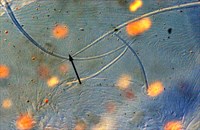
Fig. 1. Tetranychus lombardinii adult female paratype - detail of pattern of pregenital striae; n.b. details are faint - arrow indicates region of possible broken striae).
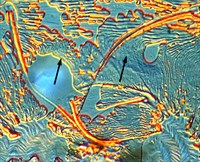
Fig. 2. Tetranychus lombardinii adult female paratype - detail of pattern of pregenital striae; n.b. specimen has spoiled - arrows indicate regions of possible broken striae).

Fig. 3. Tetranychus lombardinii adult female paratype - detail of perireme (arrow indicates tip).
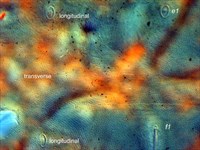
Fig. 4. Tetranychus lombardinii adult female paratype - detail of pattern of dorsal striae between setae e1 and f1 (n.b. specimen has spoiled and details are faint).
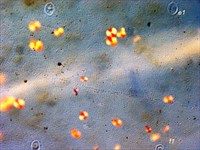
Fig. 5. Tetranychus lombardinii adult female paratype - detail of pattern of dorsal striae between setae e1 and f1 (n.b. specimen details are faint).
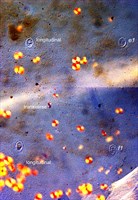
Fig. 6. Tetranychus lombardinii adult female paratype - detail of pattern of dorsal striae between setae e1 and f1 (n.b. specimen details are faint).
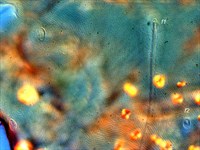
Fig. 7. Tetranychus lombardinii adult female paratype - detail of pattern of dorsal striae between setae e1 and f1 (n.b. specimen has spoiled and details are faint).
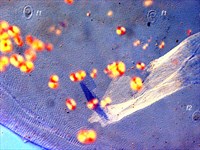
Fig. 8. Tetranychus lombardinii adult female paratype - detail of pattern of dorsal striae between setae f1 and f2 (n.b. specimen details are faint).

Fig. 9. Tetranychus lombardinii adult male paratype - detail of empodium II.
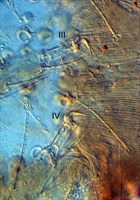
Fig. 10. Tetranychus lombardinii adult male paratype - detail of empodia III and IV.
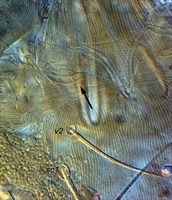
Fig. 11. Tetranychus lombardinii adult male paratype - detail of peritreme (arrow indicates tip).
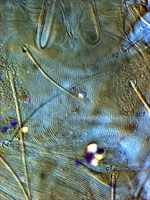
Fig. 12. Tetranychus lombardinii adult male paratype - detail of pattern of striae on prodorsum.

Fig. 13. Tetranychus lombardinii adult male paratype - detail of pattern of striae on posterior opisthosoma.
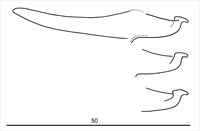
Fig. 14. Tetranychus lombardinii adult male paratype - detail of aedeagus (at different focal points).

Fig. 15. Tetranychus lombardinii adult male paratype - detail of aedeagus (at different focal points - arrow indicates the tip which is only in focus in c.).
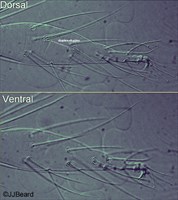
Fig. 2. T. lombardinii - adult female (non-type), tarsus I
Material examined
paratypes
Taxonomy
Subfamily Tetranychinae
Tribe Tetranychini
Common Name
Crimson spider mite
Distribution
+Australia, India, Indonesia, Kenya, Madagascar, Malawi, Mozambique, Namibia, South Africa, Zaire, Zambia, *Zimbabwe
Taxonomy Changes
None
Diagnosis
Female
- empodia I-IV with no dorsal spur above the proximoventral hairs
- tarsus I with the sockets of four tactile setae proximal to, and one solenidion overlapping, the socket of the proximal duplex seta
- tarsus II with sockets of three tactile setae and one solenidion proximal to, and one tactile overlapping, the socket of the duplex seta
- pregenital striae longitudinal, but with narrow anterior band of broken striae, striae often weak (Figs 1, 2)
- peritreme hook long (Fig. 3)
- dorsal striae between setae e1-f1 forming the diamond shape - i.e. striae between e1-e1 longitudinal or sometimes irregular, between e1-f1 transverse, between f1-f1 longitudinal (Figs 4-6); striae between f1-f1 longitudinal, and f2-f2 irregular (Figs 7, 8)
- ventral striae with lobes between genital region and setae 3a
- dark red with dark spots on either side of body
Male
- empodia I-IV with no dorsal spur above the proximoventral hairs (Figs 9, 10)
- empodia I with proximoventral hairs fused to form claw
- tarsus I with the sockeets of four tactile setae and two solenidia proximal to, and one solenidion overlapping, the socket of the proximal duplex seta
- peritreme with long hook (Fig. 11)
- prodorsum with longitudinal striae, forming a U-shaped posteriorly; lobes absent (Fig. 12)
- posterior dorsal striae between setae f1-f2 with irregular swirls (Fig. 13)
- aedeagus dorsally directed with short thick neck, and distinct knob; anterior projection almost absent, reduced to small blunt triangular nub; posterior projection narrow rectangular; dorsal margin of knob flat to weakly convex; dorsal margin of shaft at approx. 10° angle to ventral margin; ventral margin of shaft more or less straight (Figs 14, 15)
- greenish yellow
Hosts
> 100 recorded species of host plant, including: Abutilon ramosum (Malvaceae), Acalypha indica, A. segetalis (Euphorbiaceae), Amaranthus hybridus (Amaranthaceae), Atriplex muelleri, A. suberecta (Chenopodiaceae), Azadirachta indica (Meliaceae), Bidens biternata, B. pilosa (Asteraceae), Cajanus cajan (Fabaceae), Carica papaya (Caricaceae), Corchorus olitorius, C. tridens (Tiliaceae), Crotalaria juncea (Fabaceae), Cucumis metuliferus, Cucurbita maxima (Cucurbitaceae), Ficus burkei, F. carica (Moraceae), Flagellaria guineensis, F. indica (Flagellariaceae), Gerbera jamesonii (Asteraceae), Glycine max (Fabaceae), *Gossypium herbaceum (Malvaceae), Ipomoea coscinosperma, I. purpurea (Convolvulaceae), Lablab purpureus (Fabaceae), Lactua sativa (Asteraceae), Malva parviflora (Malvaceae), Manihot esculenta (Euphorbiaceae), Medicago sativa (Fabaceae), Morus alba (Moraceae), Musa spp. (Musaceae), Nicotiana glauca (Solanaceae), Passiflora edulis (Passifloraceae), Phaseolus vulgaris (Fabaceae), Rhigozum brevispinosum, R. obovatum, R. trichotomum (Bignoniaceae), Ricinis communis (Euphorbiaceae), Sida cordifolia (Malvaceae), Solanum hermannii, S. incanum, S. panduraeforme, S. retroflexum, S. rigescens, S. tuberosum (Solanaceae), Sorghum caffrorum (Poaceae), Vigna sp. (Fabaceae), Wahlenbergia undulata (Campanulaceae)
Biology
This species has been recorded to damage several crops, especially cotton, but the actual economic impact has never been studied (Jeppson et al. 1975). As it has only been recorded once in Australia (see Notes), its impact here may be minimal.
References
*Baker, E.W. and Pritchard, A.E. (1960) The tetranychoid mites of Africa. Hilgardia 29: 455-574
Gutierrez, J. (1992) Les acariens depredateurs du cotonnier. Coton Fib. Trop. 47: 153-172
+Gutierrez, J. and Schicha, E. (1983) The spider mite family Tetranychidae (Acari) in New South Wales. International Journal of Acarology 9: 99-116
Jeppson, L.R., Keifer, H.H. and Baker, E.W. (1975) Mites injurious to Economic Plants. Berkely: University of Californai Press
Migeon, A. and Dorkeld, F. (2006-2017) Spider Mites Web: a comprehensive database for the Tetranychidae. http://www.montpellier.inra.fr/CBGP/spmweb
Notes
The paratype specimens examined were in poor condition, hence the details in the images are difficult to discern; and the male aedeagus was not flat.
This species has only been recorded once from Australia from Passiflora sp. in Sydney New South Wales (Gutierrez & Schica 1983). The voucher specimens have not been examined.
Copyright © 2018. All rights reserved.